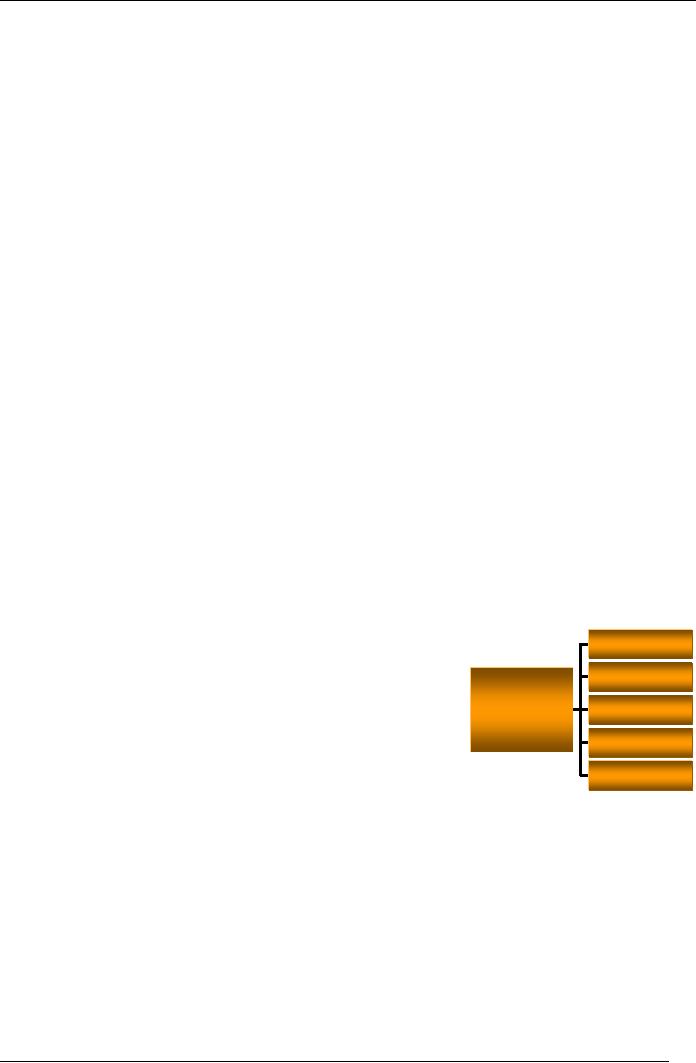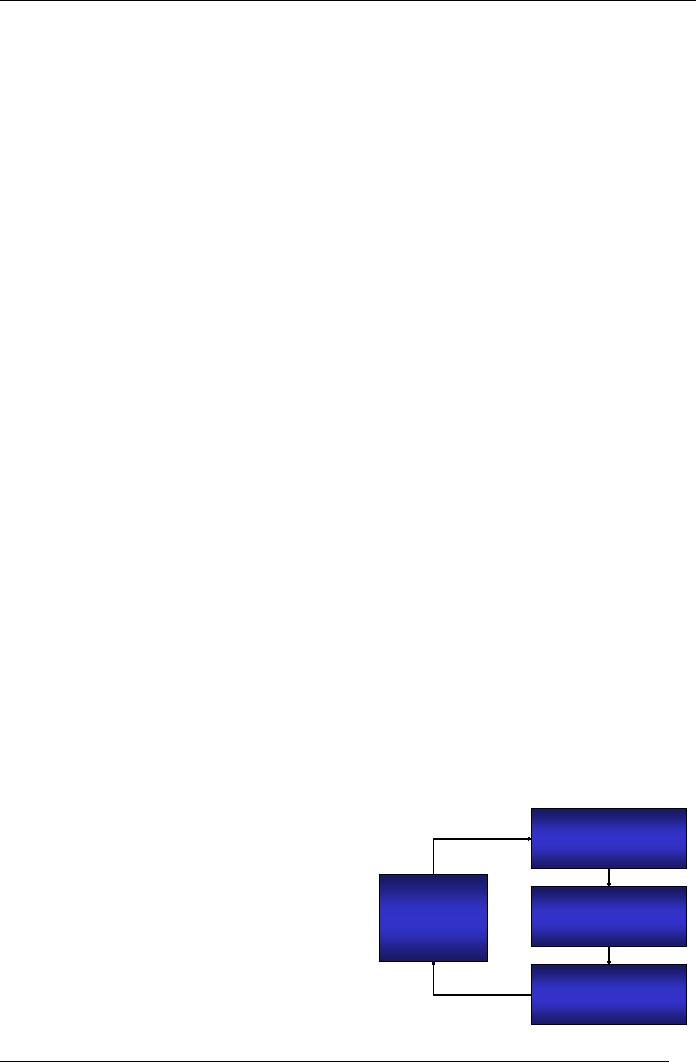 |

Human
Resource Management
(MGT501)
VU
Lesson
37
POWER
AND POLITICS
After
studying this chapter, students should be
able to understand the
following:
A.
Power
B.
Politics In Organizations
C.
Power and Politics in Context
CHAPTER
OVERVIEW
This
chapter explores how
managers use power and organizational
politics. Organizations today use power
and
politics differently than in the
past, given the uncertain environment and
the shift to flatter
hierarchies,
team
structures, and employee
empowerment. This chapter opens
with a look at power,
including the
individual
and organizational sources, the effect of culture
and gender, corruption of
power, and potential
benefits
of empowerment. Next, the chapter
examines politics.
A.
Power
Power,
the ability of one person to influence
another, is not limited to
managers. Employees at all
levels and
outsiders
such as customers have the
ability to influence the actions and
attitudes of other people.
Someone
need
not have power to influence another
person--and those with influence
may not have power.
Also,
power
is not the same as authority.
Authority is the power vested in a particular
position, such as the power
of
the security director.
I.
Power, influence, and
authority
Power
is the ability of one person to influence
another. It is not the same as authority,
which refers to the
power
vested in a particular position. It is
not synonymous with influence,
either, since someone who
has
power
may not be able to influence
others while someone without
power may have the ability to
influence
others.
Power, authority, and influence are
all integral parts of any organization,
although the way
II.
Sources of Power
Three
types of power derive from the person's
formal position in the
organization:
Legitimate
power: It is
based on a person holding a
formal
position;
Legitimate
Reward
Power:
reward power, based on a
person's access to
rewards.
Reward
Sources
of
Coercive
Power:
coercive power, based on a
person's ability
Individual
to
punish.
Coercive
Two
types of power derive from the
individual:
Power
Expert
Expert
power,:
Expert power is based on personal
expertise
and
knowledge
Referent
Referent
Power: referent
power, based on a
person's
attractiveness
to others.
Organizational
sources of power, which derive
from the structure, depend on
strategic contingencies--
elements
that are essential to the
performance and effectiveness of the
organization, department, or team.
The
three strategic contingencies
that are sources of organizational power
are: coping with uncertainty;
centrality
in the resource network; and
dependency and
substitutability.
III.
Advantages and Disadvantages of
Power
Power
is necessary in an organization because it
helps managers fulfill their
leadership responsibilities; it
also
helps all employees influence
others in pursuit of organizational and
personal goals. Two key
benefits
are
the ability to inspire commitment (as a reaction to
expert or referent power) and the ability to
reduce
uncertainty
for others in the organization. Empowerment
leads to other benefits,
such as support for
creativity
and reduction of bureaucratic
obstacles. The main
disadvantage is the potential for
misuse and
168

Human
Resource Management
(MGT501)
VU
abuse,
which can harm individuals
and the organization.
IV.
Power Corruption
Power
corruption occurs when
someone has a great deal of
power but is not held
accountable for its
use.
The
result is abuse of power for
personal gain. The power
corruption cycle starts when
managers are
physically
removed from their
employees, they may develop an inflated
view of themselves. The disparity
in
power
can cause employees to feel
helpless, so they respond by becoming
more submissive and
dependent
and
by flattering the manager. The
consequences of the power corruption
cycle are poor decision
making,
use
of coercion, low opinion of
employees, more distance
from employees, and possibly
ethical or illegal
actions
taken by the manager.
Organizations
can prevent corruption of power by
pushing for more contact
between managers and
employees;
reducing employees' dependence on
managers; and creating an open,
performance-centered
organizational
culture and structure.
One
of the most visible ways managers
and organizations can
encourage the ethical use of power is
by
modeling
and rewarding ethical behavior. In
addition, they can establish appropriate
policies and
procedures
to
identify and stop unethical
use of power and create an organizational
culture that values high
ethical
standards
for the use of power.
B.
Politics In Organizations
Organizational
politics are activities that
allow people in organizations to achieve
goals without going
through
formal channels. Whether political
activities help or hurt the organization
depends on whether the
person's
goals are consistent with
the organization's goals. In the rational
model of organizations, people are
assumed
to manage logically, based on
clear information and
well-defined goals.
I.
Elements initiating Political
activities
Three
elements create the conditions under
which political activities
thrive.
a.
Changes
in any
of the five strategic contextual forces
(environment, technology,
strategy,
culture,
and structure) can generate
uncertainty over resource allocation,
leading to an
increase
in political behavior.
b.
Changes
in the
coordination and integration of
organizational activities used to
achieve
common
goals can also lead to an
increase in political
behavior.
c.
Finally,
changes in
leadership, which change
traditional relationships and processes,
can
create
an opportunity for increased
political behavior.
II.
Rational and political models of
organizations
Organizational
politics are activities that
allow people in organizations to achieve
goals without going
through
formal channels. In the rational model of
organizations, people are assumed to
manage logically,
based
on clear information and
well-defined goals. In contrast, the
political model assumes that
information
is
scarce, individuals and
groups have diverse
goals,
negotiation
and alliances drive decision
making, and
individual
goals take the place of
rational, systematic
Building
Coalitions,
processes
for problem solving and
decision making.
Alliances,
and Networks
Alliances,
and Networks
Political
Tactics
Political
tactics are activities that
fall outside the
Political
Controlling
Resources
standardized,
formal processes of the
organization.
and
Decision-Making
Tactics
Four
types of political tactics
are building
Processes
relationships,
controlling
resources,
image
management,
and blame and
ingratiation.
Employing
Image
Management,
Blame,
�
Building
Relationship
and
Ingratiation
People
develop relationships through coalitions,
169

Human
Resource Management
(MGT501)
VU
alliances,
networks, and supportive managerial
linkages. Coalitions are relationships
formed over specific
issues;
alliances are general
agreements of support among
different individuals and
groups; and networks
are
broad,
loose support systems. Relationship
building can either help or
harm the organization.
a.
Controlling Resources
Controlling
resources and decisions, another type of
political tactic, involves
developing expertise,
becoming
indispensable, and influencing
decision criteria. Like relationship
building, controlling
resources
and
decisions can either help or
harm the organization.
b.
Image Management
Image
management means remaining visible and
presenting oneself in the best
light within the
organization.
It also means knowing when to
avoid association with people
who are considered
deviants.
c.
Blame and Integration
Blaming
and attacking others to deflect attention
from one's mistakes--and using
ingratiating behavior to
gain
favor--are unethical and negative
types of political
actions.
Managers
need to manage political
behavior from two directions. First, they
should seek to maintain and
encourage
constructive relationships, which are
essential for coordination
and effectiveness within
the
organization.
Second, they also need to
reduce negative, self-interested
behaviors that can hurt
the
organizations.
This can be accomplished through an open,
supportive organizational culture;
information
sharing
to reduce uncertainty; use of consistent,
open, and fair processes,
procedures, and
rewards;
increased
cooperation with decreased internal
competition; and rewarding and modeling
constructive
behaviors.
C.
Power and Politics in Context
Power
and politics are linked to
strategy, structure, and culture.
The development and implementation
of
the
organization's mission, strategy,
and goals entails much
uncertainty, which makes the strategic
planning
process
ripe for political activity.
To be effective, managers must apply both
power and politics as they
negotiate,
build relationships, and
seek cooperation from others.
The structure determines how
power will
be
distributed in the organization, and
managers need power to make
structural changes in response to
the
environment.
National and ethnic cultural values
influence how managers perceive
and use power.
But
power
and politics also affect the
organization's culture; in particular, how a
top leader uses power
and
politics
helps shape the culture.
KEY
TERMS
Power
Ability
of a person to influence another.
Authority
Power
vested in a particular position.
Expert
Power
Based
on personal expertise and knowledge in a
certain area. Others
comply
because they believe in the power holder's
knowledge.
Legitimate
Power
Based
on a person holding a formal
position. Others comply because
they
believe
in the legitimacy of the power
holder.
Reward
Power
Based
on a person's access to rewards.
Others comply because of the
desire
to receive rewards.
Organizational
Politics
Activities
that allow people in organizations to
achieve goals without
going
through formal
channels.
170
Table of Contents:
- INTRODUCTION TO HRM:Growing Importance of HRM, Road Map of the Course
- ESSENTIALS OF MANAGEMENT:Concepts and Essential of Management, Manager’s Roles
- ORGANIZATION AND COMPONENTS OF ORGANIZATION:Open versus Closed Systems, The Hawthorne Studies
- PEOPLE AND THEIR BEHAVIOR:Why to work in organizations?, The Goals of Organizational Behavior
- INDIVIDUAL VS. GROUP BEHAVIOR:What Are Roles?, Problem solving Team
- PERSONNEL MANAGEMENT TO HUMAN RESOURCE MANAGEMENT:Records and Administration, Competitive Advantage
- HRM IN A CHANGING ENVIRONMENT:Productivity, New Trends at Work Place
- How organization Cultivate a Diverse Workforce, STEPS TOWARD MANAGEMENT OF DIVERSITY
- FUNCTIONS AND ENVIRONMENT OF HRM:Compensation and Benefits, Safety And Health, Interrelationships of HRM Functions
- LINE AND STAFF ASPECTS OF HRM:Authority, Line versus Staff Authority, Staff Manager
- LEGAL CONTEXT OF HR DECISIONS:Doing the Right Thing, Affirmative Action, Unintended Consequences
- HUMAN RESOURCE PLANNING (HRP):Benefits of HR Planning, Forecasting Human Resource Availability
- STRATEGIC PLANNING AND HRIS:HR’s Strategic Role, Human Resource Information System, Common HRIS Functions
- JOB ANALYSIS:Purposes of the job Analysis, Questions Job Analysis Should Answer
- JOB ANALYSIS:Methods of Collecting Job Analysis Information, Observation, Source of Data
- JOB ANALYSIS (CONTD.):SURPLUS OF EMPLOYEES FORECASTED, Diversity through Recruiting Efforts
- SOURCES OF RECRUITMENT:ALTERNATIVES TO RECRUITMENT, Quantity of the Applicants, Quality of the Applicants
- SELECTION:Initial Screening, Advantages of Successful Screening
- SELECTION TESTS:Characteristics of Properly Designed Selection Tests, Guidelines for Conducting an Interview
- SELECTION PROCESS… CONTD:Background Investigations, Physical Exam, Selecting Managers
- SOCIALIZATION:Compensation and Benefits, Team Membership, Stages in socialization Process, Training and Development Trends
- TRAINING AND DEVELOPMENT:Learning, Phases of Training, Why Transfer of Training Fails
- MAXIMIZING LEARNING:Following up on Training, Repetition, Feedback, Purposes of T & D
- CAREER MANAGEMENT:Individual career planning, Career Planning and Development Methods
- PERFORMANCE:Determinants of Job Performance, Why is performance measured?, Performance Management
- PERFORMANCE APPRAISAL:What to Evaluate, The Appraisal Interview, PROBLEMS IN PERFORMANCE APPRAISAL
- JOB EVALUATION AND PRICING:THE APPRAISAL PERIOD, Ranking method,
- COMPENSATION SYSTEM:Pay, Job Pricing, Compensation: An Overview, Compensation Surveys
- BENEFITS:Total Compensation, Discretionary Benefits (Voluntary), Workplace Flexibility
- ROLE OF MONEY IN PERFORMANCE OF EMPLOYEES:Types of Pay-for-Performance Plans, Empower Employees
- MOTIVATION:The Motivation Process, Motivational Theories, Challenges of motivating employees
- OCCUPATION, HEALTH & SAFETY:Physical Conditions, Accident Investigation, Smoking in The work place
- STRESS MANAGEMENT:Symptoms of Stress, Managing Stress,
- COMMUNICATION IN ORGANIZATION:Burnout, Social Support at Work & Home, Communication in organization, Meetings
- TRADE UNIONS:Collective Bargaining, The HRM Department in a Nonunion Setting, Phases of Labor Relations
- CONFLICT AND NEGOTIATION:Transitions in Conflict Thought, Individual Conflict Management Styles
- POWER AND POLITICS:Sources of Power, Advantages and Disadvantages of PowerPower and Politics in Context
- EMPLOYEE RIGHTS AND DISCIPLINE:Contractual Rights, Management Rights, Disciplining Employees,
- DISCIPLINE (CONT...):Factors to Consider when Disciplining, Disciplinary Guidelines, Employee Separations
- LEADERSHIP:The Leader’s Behavior, Situational Theories of Leadership, Becoming a Leader
- REVISION (LESSON 12-21):Plans, Job Specification, Human resource planning, Selection Process, Corporate Culture
- REVISION (LESSON 22-26):Training, Case Study Method, Training, Performance
- REVISION (LESSON 27-35):Classification Method, Compensation, Empowerment, Mediation
- INTERNATIONAL DIMENSIONS OF HRM:Global Corporation, Type of staff members, Approaches to Global Staffing
- CONCLUSION & REVIEW:Strategies for Gaining Competitive Advantage, High-performance Work System